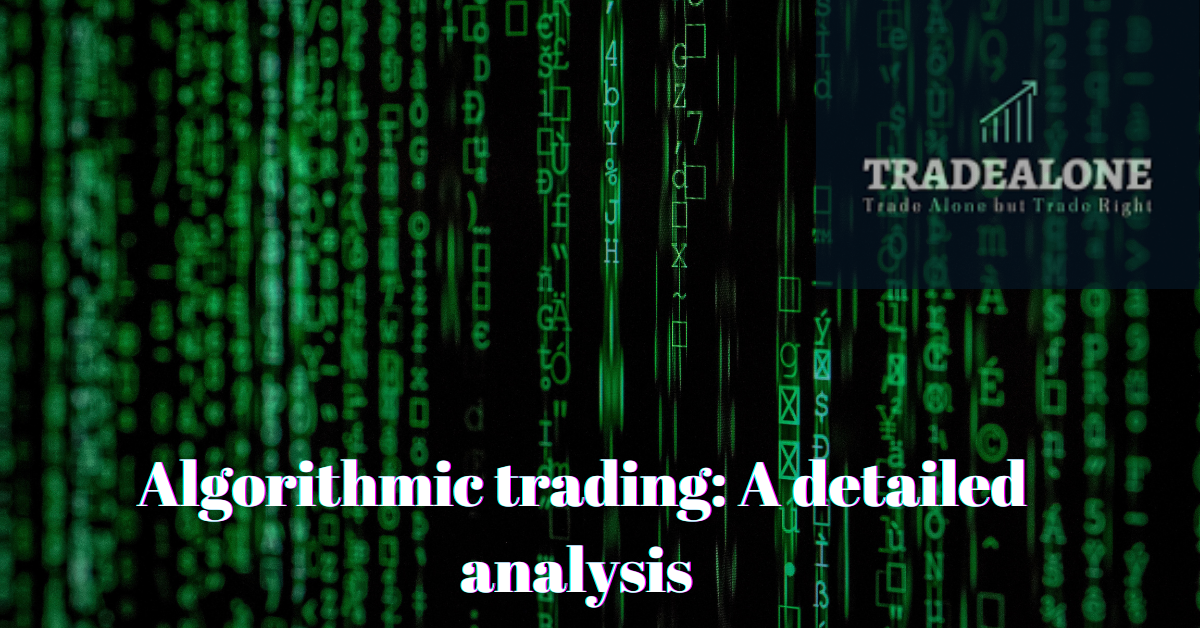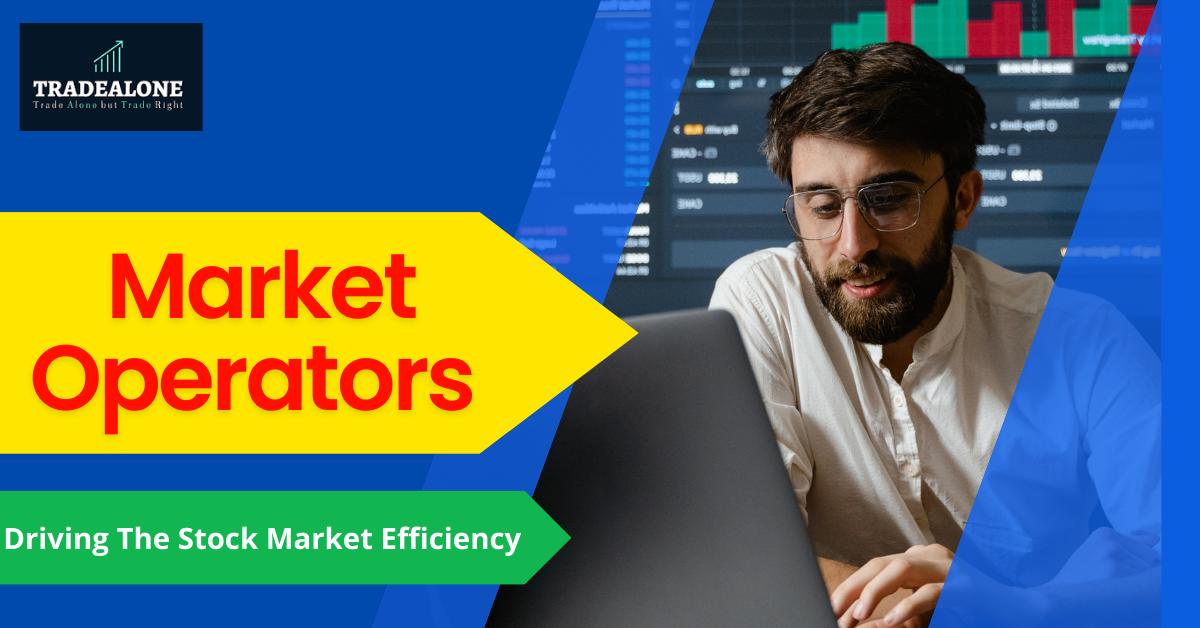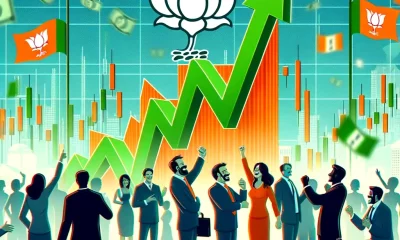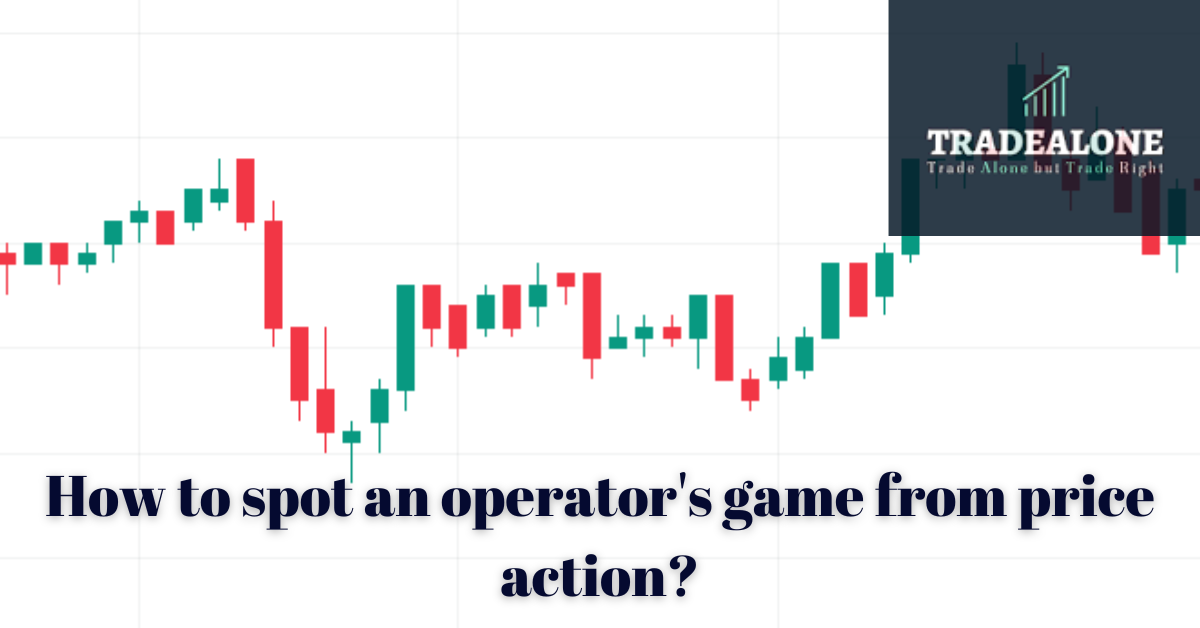Trending
Tata Motors: A dip in CV sales in its latest quarter, but good days ahead

Tata Motors is a leading global automobile manufacturer which was established in 1945. This mighty automobile manufacturer started with the production of locomotives and engineering products, then it ventured into steam road rollers following which the company rolled out its first commercial vehicle TMB 312 truck in 1954. Since then the company has been into the commercial vehicle business before launching its first passenger vehicle Tata Sierra in 1991. The company didn’t restrict itself from manufacturing Heavy commercial vehicles but also launched mini trucks such as Tata ACE and TATA Magic. Tata Motors then launched its Tata Armored Personnel Carrier (APC), which ignited its defense manufacturing value chain. This explains the diversified portfolio of business this $37 Billion company is providing in India and all over the world.
In the company’s Q1FY24 results we can see that the consolidated revenue has taken a minor dip, when investigating further we can see the dip in volumes of domestic commercial vehicles here and in exports, let us find the root cause and foresee how the company plans to overcome this barrier.
Domestic CV of TATA Motors

The manufacturer provide various commercial vehicles such as load transportation solutions and passenger transportation solutions. The load transportation solution begins with mini trucks, pick-up trucks, LCV ( Light commercial vehicles), Intermediate commercial vehicles(ICVs), Ultra ICVs, tippers and MHCVs (Medium and heavy commercial vehicles). While the passenger transportation solutions varies from mini bus to electric buses. The company has been striving hard to deliver a robust performances across the verticals. But as we observed the dip in domestic CV volumes in Q1FY24, let us discuss the rationale behind it.
What are BS and BS6 norms?

The government of India introduced Bharat stage (BS) VI emission norms in 2020. The central pollution control Board(CPCB), are issuing standards and timelines for emission control in vehicles. The board falls under the Ministry of Environment, forests and climate changes. These norms dates back to the year 2000, when India2000, the first emission norm was set up. This was followed by BS-I, BS-II, BS-III , BS-IV and finally to BS-VI. The board has skipped BS-V as it too so long earlier to reach BS-IV from BS-III.
The recently introduced BS VI norms restricts the
- Volume of particulate matter
- Lower Sulphur content in emissions
- Emission of certain hydrocarbons
- Emission of 70% lesser nitrogen-di-oxide.
Taking into consideration of the new emission norms, let us see how they have impacted the production and revenues of Tata’s Commercial vehicles.

What do we infer from the table.
- A falling revenue of 4.2 K crores, with a drop in EBITDA and EBIT by 0.7% and 2.1% respectively
- The Domestic whole sales of Commercial vehicles dropped to 82.4 K units from 112.5 K units while the retail sales fell a drastic 77.6K units from 397.2K units in last quarter.
- The exports in Q1Fy24 was also at 3.6K units which is a drop of 32% YoY.
Now let us see how the overall consolidated revenue, profits and cashflows has changed quarter to quarter.
| Particulars | Q3FY23 | Q1FY24 |
| Revenue | 105,932 crores | 102,236 crores |
| EBITDA | 13.3% | 14.4% |
| EBIT | 6.8% | 8.1% |
| PBT | 5000 crores | 5330 crores |
How does Tata Motors plan to ramp up the CV sales?
- The company says apart from seasonality, the commercial vehicle industry was impacted by transition to BS6 phase 2 emission norms.
- The fall in domestic commercial vehicle sales was balanced by growth of HCV volumes by 9% YoY.
- The HCV growth is fueled by strong infrastructure push by government as well as increased commercial activity in e-commerce, construction and replacement demand in auto logistics and petroleum sector.
- The industry is facing headwinds such as high interest rates, fuel prices and inflation currently. But the company drives growth by demand-pull strategy and plans to step up competitiveness with improved availability of extensive range of products.
Tata motors closed at Rs.607/share which is a 0.78% decline of prices and for a month the decline is 3.02%. However the return of tata motors for 5 years is 142.1% and its 3-year return is 384.07%. The company is also planning to gear up the growth of 3 verticals which includes CVs, PVs and EVs. The minor dip in CV sales mostly owing to the geopolitical situations and induction of new emission norms will be overcome by focusing on growth and profitability. Tata motors also plans to launch the EV segment of Jaguar and Range Rover by 2025. The net debt of the company is also expected to reach zero by FY24.
With their aspirational electric portfolio and alternate powertrains the company will try to maintain its leadership in EV segment. The company with its path breaking innovation and leading EV drive promises a futuristic auto technology and a sustained growth.
Trending
Why is Algorithmic trading popular?

What is the basic meaning of an Algorithm?
Before we learn about algorithmic trading let u see what is an algorithm. An algorithm is a basic set of instructions that is used to solve a set of problems or to perform a set of computations. The algorithm finds its use in mathematics and computer science. A stock market is a market in which a trader uses his analytical skills and research skills to perform trades. When we apply a technical indicator to a chart, the calculations behind the indicator are all algorithms. Let us see how a basic algorithm looks like

We understood what an algorithm looks like from the above image. Now let us see a brief introduction to trading.
What is trading?
Stock market trading involves buying and selling shares of various companies. A trader who wishes to trade opens a Demat account through one of the discount brokers. Then he can add stocks to his watchlist, from where he begins to trade. When the trader wishes to buy stocks from a company, he places a buy order, and he buys stocks from the stock market, similarly when a trader wishes to sell stocks, he places a sell order, which enables him to sell stocks to the market. In this trading, the trader does trading manually without the use of algorithms or computer programs. This kind of trading is called manual trading.
Disadvantages of Manual trading
- A trader is a human filled with human emotions such as fear of loss, revenge on previous loss, and other behavioral biases. If he trades based on these emotions, he will take illogical trading decisions.
- In the stock market, every trade takes milliseconds to execute. A manual trader, if he has less experience in trading may take much time to complete his trade. Though this delay is not much significant, can incur a few losses to the trader.
- A manual trader will not be able to multitask. For example, he finds it difficult to monitor various companies’ shares or various modes of investments like stock, commodities, and derivatives at the same time.
To overcome the shortcomings of manual trading, algorithmic trading came into use.
What is algorithmic trading?

Algorithmic trading involves the usage of computer codes to enter or exit the trade once certain criteria in the stock market are met. This trading is also known are algo trading and also known as automated trading. There are various trading platforms that use algo trading software that provides algorithmic trading to users. Prominent algo trading software in India is
- Zerodha Streak
- Zerodha Algoz
- Tradetron Tech
- Algo Test
- Quantiply
- Algobulls
History of Algorithmic Trading
In the early 1970s New york stock exchange introduced the “designated order turnaround” system. In this system, orders are electronically routed to trading posts. After introducing electronic markets, NYSE came up with program trading. This program trading consists of pre-programmed trades to automatically enter and exit trades depending on various strategies. This “program trading” was initially used in index arbitrage. Index arbitrage is a trading strategy that strives to benefit from the price movements of various indexes. We will see how algorithm trading came into the scene after the initial introduction by NYSE.
- In 2001, the decimalization changed the minimum tick size from US$ 0.0625 to US$ 0.01 per share. This could have triggered liquidity in the market leading to the usage of computer algorithms to execute orders at better prices.
- In 2001 IBM published a research paper at the Joint Conference on Artificial Intelligence. Two algorithmic strategies are shown in this paper which continuously outperforms human traders.
- Many broker-dealers were offering algorithmic trading strategies to clients such as Chameleon by BNP Paribas, Stealth by Deutsche Bank, Sniper, and Guerilla developed by Credit Suisse
Studies in 2006 showed London Stock Exchange consist of 40% of trades by algorithmic traders and by 2008 European and American markets consisted of 80% of algorithmic traders. Algorithmic trading and High-frequency trading(HFT) have been the subject of public debate since the US Securities and exchanges commission and Commodity futures trading commission said in reports that an algorithmic trade entered by a mutual fund company led to the 2010 Flash crash.
Languages used in Algorithmic trading
Python– Python is a high-level, general-purpose programming language, which acts as a support language for software developers, building control, management, and testing. It is easy to use and versatile, and a larger population uses Python.
Java- Java is a high-level, robust, object-oriented programming language and secure programming language
C++- C++ is one of the world’s popular programming languages which is found in operating systems, Graphical user interfaces, and embedded systems.
R- R is a language and environment for statistical computing and graphics.
Let us take examples to understand Algo trading better.
Examples of Algo trading
We will consider that trader A is planning to buy stocks of company X. He is a person who trades depending on moving averages. If trader A wishes to do short-term trading he chooses a 12 or 26-day moving average(MA). On the other hand, if he chooses to do long-term trading he chooses 50-200 MA.

If the short-term moving average cross over the long-term moving average it creates a bullish pattern and when the short-term moving average crosses under the long-term moving average bearish pattern is formed. So If trader A is applying algo trading to this trade, he applies for programs in such a way that the program places a buy call when the bullish pattern appears or places a sell call when the bearish pattern appears. Thus, trader A does not need to fix his views on the price movement, but just use algo trading instead.
Here the input is given in terms of moving average, sometimes in long-term trading, if an investor wishes to buy a stock once it gives 4% higher returns as compared to its present return, an algo trading helps the investor achieve it without the anxiety of overlooking it. Similarly, the investor can sell it if it gives a lesser return than expected.
Instead of using only one factor like moving average or return percentage, algo trading can give commands with a combination of controlling factors too.
Types of Algo trading
- One type is Bridges, where a trader buys a 3rd party algo trading platform and adds it as a plug-in to his currently using trading platform. For example, if a trader uses Zerodha for trading, he can choose an algo software like AlgoTest. This AlgoTest is compatible with IIFL, Fyer Duck, Trading View, Zerodha, etc.
- API is an Application programming interface. Here the trading platform provides the algo software in its platform itself. These Algos which the broker provides to its customers are known as discretionary algorithms. For example, Zerodha offers Zerodha Streak and Angel One offers Smart API.
Algo trading strategies in the market
- Trend strategies
- Arbitrage opportunities
- 52-week low-high
- Mean reversion strategy
- Momentum strategy
- Statistical arbitrage and much more.
Does SEBI allow Algorithmic Trading?
SEBI is the regulator of the stock market in India, it monitors any activity that poses a threat to investor’s safety and security of funds. SEBI issues regulations whenever it notices abnormality in the market. Likewise, SEBI has mentioned in its notice that ” StockBroker is responsible for all the algos emanating from its API and redressal of any investors dispute. Definition of obligations of stock broker, investor, and 3rd party algo vendor is necessary. The stock broker is responsible for assessing the suitability of the investor prior to offering the algo facility. SEBI does not recognize 3rd party Algo providers. The stock broker has to make sure the 3rd party algo provider with whom the broker has an agreement, shall use the name of the broker as part of their testimonial, provided agreement-related advertisement guidelines are met”.
Is Algo trading a pressing priority?
There are several advantages of Algo trading like
- High speed
The time taken to execute a trade in algo trading is very high in comparison with manual trading. When a large number of trades executing happens in the market, algo trading executes it in a second, thus making a profit using the buy/sell spread.
- High accuracy
As the orders are pre-entered in the algorithms, the probability of errors is very less. We can achieve a very accurate order execution
- Negligent behavioral bias
There are lots of behavioral biases by which a trader tends to lose money like loss aversion bias, confirmation bias, ownership bias, Gambler’s fallacy, Anchoring, Herd mentality, and, much more. Algo trading eliminates all biases and avoids losses due to human emotions.
- Backtesting
Backtesting is a strategy used to test a financial model on previously available data. A trader can achieve more success by improving the time he performs backtest on historical data to improve the accuracy of the model.
Algo trading is already been widely used by QIPs, mutual fund companies, insurance agencies, etc. But SEBI issues guidelines and regulations to protect retail investors from frauds happening from unregulated sources in the stock market. Algo trading will gain momentum and popularity in the future and SEBI will be monitoring all the activities of both brokerage firms and 3rd party algo vendors. Before choosing any algo trading platform or strategy, investors should remain vigilant in protecting their money.
Market Basics
The Impact of Options Trading on Stock Prices: A Comprehensive Analysis

Options trading can have a significant impact on stock prices, both directly and indirectly. In this article, we will explore the various ways in which options trading influences stock prices, including through delta hedging, volatility effects, and market sentiment.
1. Delta Hedging
Delta hedging is a trading strategy used by investors to mitigate the risk of changes in the price of an option by buying or selling the underlying asset. For instance, if an investor purchases a call option on a stock, they may also buy shares of the stock to offset the risk of a potential price decrease. This buying pressure created by delta hedging can contribute to pushing up the stock price.
2. Volatility Effects
Volatility plays a crucial role in options trading and can indirectly impact stock prices. Options prices tend to be higher when there is higher market volatility and lower when volatility is low. Investors are willing to pay more for options when they expect significant price movements in the underlying asset. Thus, an increase in options trading activity can lead to higher volatility in the underlying asset, which, in turn, may result in higher stock prices.
3. Market Sentiment
Options trading can be a reflection of market sentiment, which is a measure of how bullish or bearish investors feel about a particular asset. When there is a substantial amount of options trading on a specific stock, it can indicate a strong bullish or bearish sentiment towards that stock. This sentiment can influence stock prices in the direction of the prevailing sentiment.
4 . Supply and Demand Dynamics

The primary ways options trading impacts stock prices is through changes in supply and demand dynamics. As investors buy and sell options contracts, it affects the perceived interest in the underlying stock. When there is a surge in demand for call options (the right to buy the stock), it indicates bullish sentiment, potentially leading to higher stock prices. Conversely, an increase in demand for put options (the right to sell the stock) signals bearish sentiment and could result in lower stock prices.
5. Volatility and Implied Volatility
Options trading can introduce additional volatility to the stock market. The prices of options themselves are influenced by market volatility expectations, which are measured by implied volatility. If there is heightened uncertainty or news events surrounding a stock, implied volatility may rise, leading to more expensive options. As a result, the stock price may experience larger swings as traders adjust their positions to factor in the changing volatility.
6. Options Expiration and Pinning
Options have an expiration date, and as that date approaches, traders may adjust their positions or decide to exercise their options. This behavior can lead to increased trading activity and volatility as the expiration date nears. Additionally, “options pinning” or “options max pain” refers to the phenomenon where the stock price gravitates toward the price that causes the most options contracts to expire worthless, benefiting options writers. This pinning effect can influence short-term stock price movements, especially around expiration dates.
7. Hedging Strategies
Market makers and professional traders use options as part of their hedging strategies to manage risk in their portfolios. When they sell options, they often hedge their positions by buying or selling the underlying stock. This hedging activity can affect the stock’s price by creating additional buying or selling pressure. For instance, when market makers sell call options, they may buy the underlying stock to hedge against potential losses, leading to increased demand and higher prices.
8. Impact on Investor Sentiment
Options trading can impact investor sentiment and perception of a stock. Unusual options activity, such as a surge in call buying, may be interpreted as a signal of positive expectations for the stock’s future performance. On the other hand, heavy put buying might lead to negative sentiment and dampen the stock’s price.
9. The Small and Indirect Impact
While options trading can have a notable impact on stock prices, it is essential to understand that this influence is typically more pronounced in the short term rather than the long term. The effects can be more significant for highly liquid stocks with higher volatility levels. However, in general, the impact of options trading on stock prices might be small and challenging to predict due to the complexities of the options market and other influencing factors.
Option Pricing Model
Here is a table of the most common option pricing models:
| Model | Description |
|---|---|
| Black-Scholes model | A mathematical model that uses five inputs to price options: the strike price, the current stock price, the time to expiration, the risk-free rate, and the volatility. |
| Binomial model | A discrete-time model that prices options by assuming that the underlying asset can only move up or down by a certain percentage in each time step. |
| Monte Carlo model | A simulation-based model that prices options by randomly generating a large number of possible price paths for the underlying asset. |
| Heston model | A stochastic volatility model that prices options by assuming that the volatility of the underlying asset is itself a stochastic process. |
| SABR model | A simplified version of the Heston model that is easier to calibrate and use. |
The Black-Scholes model is the most widely used option pricing model, but it is not without its limitations. The model assumes that the underlying asset follows a geometric Brownian motion, which is a continuous-time random walk. This assumption is not always accurate, especially in the short term. The Binomial model and the Monte Carlo model are more accurate than the Black-Scholes model, but they are also more computationally expensive.
The choice of which option pricing model to use depends on a number of factors, including the type of option, the time to expiration, and the volatility of the underlying asset. In general, the Black-Scholes model is a good starting point, but it may be necessary to use a more complex model if the underlying asset is volatile or if the option has a long time to expiration.

| Model | Advantages | Disadvantages |
|---|---|---|
| Black-Scholes model | Simple to use, widely available | Assumptions may not be accurate |
| Binomial model | More accurate than the Black-Scholes model | Computationally expensive |
| Monte Carlo model | Most accurate option pricing model | Computationally very expensive |
| Heston model | More accurate than the Black-Scholes model | Assumptions may not be accurate |
| SABR model | Simplified version of the Heston model | Less accurate than the Heston model |
Conclusion
Options trading can exert both direct and indirect influence on stock prices. Delta hedging can create buying pressure on the underlying asset, pushing up stock prices. Volatility effects can result in increased options prices and subsequently higher stock price fluctuations. Additionally, options trading activity can reflect market sentiment, leading to stock price movements in the direction of prevailing sentiment. However, it is important to recognize that the impact of options trading on stock prices is typically more pronounced in the short term, and predicting its effects can be challenging. As with any investment activity, thorough research and consideration of the risks are crucial when engaging in options trading.
Visit Tradealone for more Updates
Finance World
Market Operators: Driving Stock Market Efficiency

In the complex stock market world, various players are involved, each with their distinct roles. Market operators among these participants are essential in enabling and controlling trade operations. Market operators, sometimes referred to as exchange operators or stock exchange operators, are organizations in charge of regulating the operation of stock exchanges, fostering a positive trading environment, and guaranteeing honest and open market practices. This blog explores market operators’ roles, effects, and difficulties within the financial ecosystem to shed light on their existence and relevance in the stock market.
Understanding Market Operators’ Roles
Businesses oversee and manage the primary exchanges where financial instruments like stocks, bonds, and derivatives are bought and sold. These market intermediaries link buyers and sellers, typically commercial businesses or nonprofit institutions.
1. Creating and maintaining a Trading Platform: Market operators create a reliable trading platform where investors can place deals. This entails putting the required technical framework for high-frequency trading in place, keeping up order matching systems, and ensuring that trading operations run without interruption.
2. Market regulation: Market administrators uphold laws and norms to keep the playing field level for all participants. They take action to stop insider trading, market manipulation, and other illicit activities.
3. Listing and Delisting: Market operators oversee the procedure for companies to be listed on the stock exchange and make sure they adhere to strict eligibility requirements. To protect the caliber and reputation of the listed companies, they also supervise the delisting of businesses that no longer adhere to the exchange’s rules.
4. Market Surveillance: Market operators constantly watch trade activity for any suspicious or out-of-the-ordinary behavior that could jeopardize the market’s integrity. They work to quickly spot any market abuses by utilizing cutting-edge surveillance equipment.
Market Operators’ Effects on Trading
1. Liquidity and Efficiency: Market operators promote liquidity by giving buyers and sellers a centralized platform where they may quickly identify counterparties for their deals. As a result, securities are exchanged at fair and open prices, which improves market efficiency and price discovery.
2. Investor Confidence: Knowledgeable market operators running a well-managed stock exchange boost investor confidence. The market operators’ competence and efforts lead to more people participating in the market with increased confidence in the safety of their investments and the limited risk of market manipulation.
3. Market Innovation: Market actors frequently drive innovation in the financial sector. They consistently work to provide cutting-edge trading procedures, better technologies, and new trading tools that can adjust to shifting market dynamics.
4. Economic Growth: An efficient stock market, managed by skilled market participants, can promote economic growth. It promotes entrepreneurship and investments across various industries by giving businesses access to finance via the issuance of stocks.
Issues Facing Market Operators

Despite playing a crucial role, market participants face several difficulties in ensuring efficient market operations:
1. Technological Complexity: The dynamic nature of the financial markets necessitates an advanced and durable technological foundation. They must invest in technology to guarantee continuous trade, fend off cyberattacks, and manage growing data quantities.
2. Compliance with Regulations: Market participants are subject to strict regulatory frameworks directing business conduct. Complying with these rules can be difficult and time-consuming when launching new goods and services.
3. Market Fragmentation: As financial markets have become more internationalized, the proliferation of several trading platforms has exacerbated market fragmentation. To ensure seamless trade, they must develop a mechanism to link these dispersed marketplaces.
Epilogue
Market operators are essential to promoting a fair, effective, and transparent trading environment. They guarantee market integrity and investor confidence by giving investors a platform to trade on and implement market laws. Market participants continue to adapt and innovate despite obstacles like technical complexity and regulatory compliance, making a substantial contribution to the expansion and stability of the global financial system. Understanding their function as investors and stakeholders enables us to make wiser choices and better navigate the volatile stock market.
Follow us at TradeAlone.com to stay updated with the latest market news.
-

 Profit Making Idea1 year ago
Profit Making Idea1 year agoThe Grandfather Son (GFS) Strategy: A Technical Analysis Trading Strategy
-

 Uncategorized8 months ago
Uncategorized8 months agoA BJP victory and the Stock Market: what to expect this monday
-

 Technology5 months ago
Technology5 months agoInnovative Metro Ticketing Revolution in Pune by Route Mobile and Billeasy’s RCS Messaging. Stock trades flat
-

 editor9 months ago
editor9 months agoHow to research for Multibagger Stocks
-

 Trending12 months ago
Trending12 months agoDoes the “Tata-Apple venture” benefit Tata shares?
-

 Finance World12 months ago
Finance World12 months agoHow Zomato Turned Profitable: A Landmark Achievement in the Indian Food Delivery Market
-

 Market ABC8 months ago
Market ABC8 months agoSpotting an operator game: How to do it?
-

 Market ABC1 year ago
Market ABC1 year agoThe Pullback Strategy: A Timeless Approach to Investment Success







